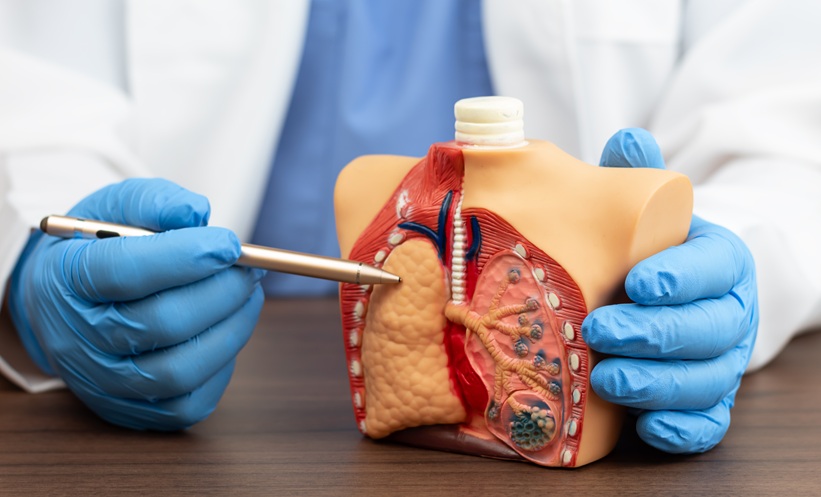According to the World Health Organization (WHO), obesity is approaching pandemic levels. It has now been indisputably proven that obesity increases the risk of developing bronchial asthma and worsens patients’ control over their condition. Simultaneously, an unmanageable phenotype with implications of dependence on a dose or resistance to inhaled glucocorticosteroids is formed. Today, studying the cellular structure of the induced sputum, as an effective, non-invasive method of assessment of inflammation in a bronchial tree, is of particular importance. The aim of this study was to estimate the changes in cellular structure in the induced sputum of young patients with bronchial asthma and the relationship between structures and BMI.
MATERIAL AND METHODS
The study examined 164 patients with asthma of varying severity; subjects ranged from 18–44 years of age and were divided into two groups, dependent on BMI. Group 1 included patients with a BMI of 18–25 kg/m2 and Group 2 had a BMI of 30–40 kg/m2. The control group included 40 healthy volunteers. The study assessed the existence of excess weight and degree of obesity, the parameters of respiratory function, and the cellular structure of the induced sputum.
RESULTS
Obesity and asthma were found to coexist, with obese patients experiencing moderate-to-severe asthma (p<0.001). In this group, bronchial obstruction expression was more significant when compared with patients from Group 1 (р<0.05). It was shown that obesity is interconnected with the depression of forced expiratory volume in 1 second/forced vital capacity, and the increase of residual volume (RV), RV/total lung capacity, and resistance of respiratory tracts on exhalation, in comparison with the control group (р=0.004). Analysis of peripheral blood indicated a higher content of neutrophils in obese patients (р<0.05). The analysis of cellular structure of the induced sputum showed prevalence of eosinophilic inflammation in Group 1, whereas Group 2 patients more often expressed a paucigranulated biotype.
In patients with mild bronchial asthma and a BMI of <25 kg/m2, nearly one-quarter of patients (23%) had paucigranulated inflammation biotype, and the majority (77%) were treated for eosinophilic inflammation. In patients with moderate bronchial asthma from this group, the analysis of cellular structure of the induced sputum was characterised by almost equal separation of eosinophilic (55%) and paucigranulated (45%) biotypes. Patients with severe asthma were observed to also have eosinophilic inflammation.
Among patients from Group 2, the paucigranulated endotype was registered in 99% of patients with mild asthma, 67% of patients with moderate asthma, and 40% with severe asthma. In severe asthma cases with obesity, 60% expressed neutrophilic inflammation. Thus, the severity of bronchial asthma in combination with obesity is associated with the heterogeneity of inflammation biophenotypes. Furthermore, the maintenance of neutrophils increases with statistical significance, parallel to the severity of asthma and the process of bronchial obstruction. The increase of neutrophilic inflammation in patients with asthma and excess body weight aggravates the current disease, which is followed by reduced control over the disease, deterioration in bronchial permeability, and an increase of pulmonary hyperinflation.








